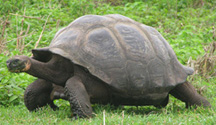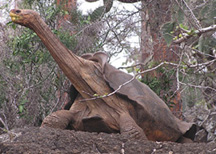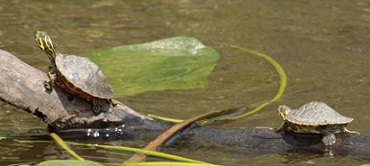
| Outreach and Media | Teaching |
| Research | ||||
| |
||||
|
Our
work focuses on vertebrate ecology and
evolution. Our main research interests are the
study of evolution of form and function, the
effects human impact on vertebrates, and the
evolution of cancer suppression mechanisms |
||||
| Evolution of form and function |
|
|||
|
Evolution of shell shape in
Galápagos tortoises The giant tortoises inhabiting the Galápagos archipelago represent one of only two surviving lineages of once widespread giant tortoises. Galápagos tortoises have two very distinct shell shapes: either domed, with a typical rounded carapace, or saddleback, with a higher anterior opening of the carapace and a more compressed shape on the sides. Although there is a correlation between shell shape and environmental characteristics (drier or more humid environment), it is currently not clear if the different shell morphologies represent an adaptation to these environments and in this case, what is the function and performance for which they are adapted to. We are studying the evolution and possible adaptation of the different shell morphologies within and among populations of the giant Galápagos tortoises. To this purpose, we integrate genetic and morphometric data. An interview on our work (in Dutch) on functional morphology can be found here. |
 
|
|||
|
Evolution of color and color
pattern in lizards Body
color and color patterns in vertebrates are one
of the best known examples of phenotypic
variation and coloration has been shown to
evolve based on the interactions between and
organism and its environment. Coloration and
color patterns are known to be functionally
important for sexual selection, communication,
and mimicry. We are interested in investigating:
1) the molecular basis of color and color
pattern variation in lizards; 2) how color
patterns change during ontogeny and in
understanding the influence of genotype,
environment and stochasticity on this variation;
3) the ecological function of different color
patterns (e.g., communication, predator escape,
individual recognition). To accomplish this
work, we integrate genomics, mathematical
modeling, and behavioral experiments.
|
Photo: Dr. T. Gamble |
|||
| Effects of human impact on vertebrates | ||||
|
Urban ecology and evolution
|
 Photo: N.
Moreno Photo: N.
Moreno |
|||
| Evolution of cancer suppression mechanisms | ||||